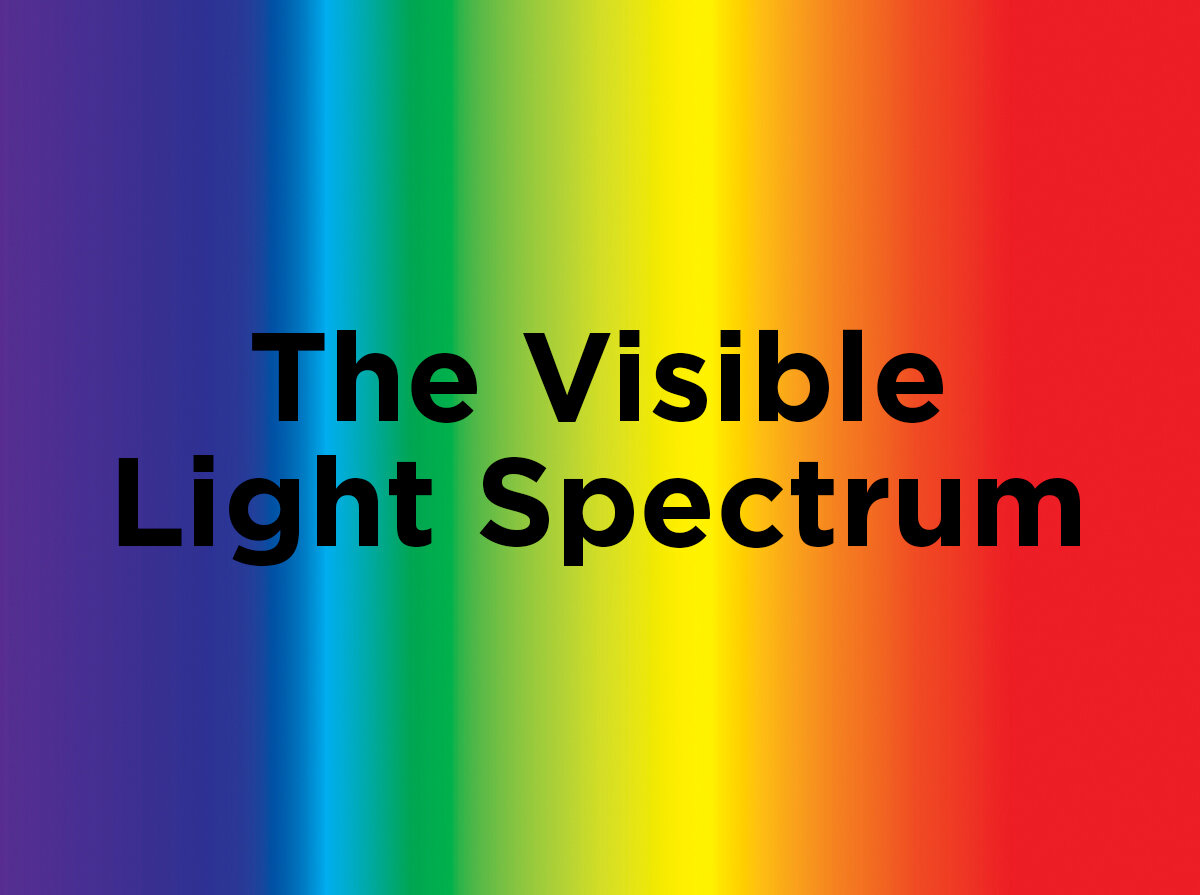The Visible Light Spectrum
Did you know that light is actually a form of electromagnetic radiation? While we tend to think of light as only the radiant energy that we can see, the light we detect with our eyes is just a small fraction of the types of light that exist. In fact, the electromagnetic spectrum includes a wide range of light waves, from radio waves at its lowest frequency to gamma rays in its highest frequency. Somewhere in the middle is visible light, which itself is sandwiched between lower frequency infrared rays and higher frequency ultraviolet rays. Other types of invisible light include radio waves, microwaves and X-rays, but today, we’ll be focusing on the visible light spectrum.
The visible light spectrum (or the part of the electromagnetic spectrum that we can see) only makes up a small portion of the electromagnetic spectrum, with wavelengths between 380 and 760 nanometers. Visible light is made up of colors ranging from red to violet, and each color has its own range of wavelengths. The realization that visible light is made of colors came when Isaac Newton used a prism to create a rainbow from a beam of white light. A prism can bend visible light, causing colors to refract at a slightly different angle depending on the wavelength of the color. Red has the longest wavelength, at around 650 nanometers, and violet has the shortest wavelength, at around 400 nanometers.
Infrared and Ultraviolet Rays in Visible Light
Unlike how they’re shown here or even in textbooks, electromagnetic rays are not neatly confined to certain wavelengths. Instead, they tend to “bleed” together, meaning that visible light may also contain some of the ultraviolet and infrared rays that border it. Certain insects (like honey bees) can see ultraviolet light, and others (such as snakes) can see infrared light. While perfectly fine for bees and snakes, certain wavelengths of ultraviolet and infrared light can be detrimental to humans and objects.
When a light source ventures into the ultraviolet rays’ territory, the light may fade clothing, paintings, and anything sensitive to ultraviolet light. Similarly, when a light source ventures into the infrared spectrum, infrared (in the form of radiated heat) can overwhelm the visible light. The reason why incandescent light bulbs are so inefficient is actually because as much as 90% of the electromagnetic rays produced by an incandescent bulb are in the form of infrared heat—only the remaining 10% is visible light. In comparison, the reason LED light bulbs are so efficient is because they use technology that emits very little infrared heat, which results in more energy being converted into usable light.
Yet, none of this is to say that all infrared and ultraviolet light is bad. These light forms have many practical purposes as well. For example, heat lamps made for use in the winter are dominated by infrared rays, while germicidal lamps and black lights utilize ultraviolet rays. The light bulbs you purchase for use around the home typically do not contain enough infrared or ultraviolet rays to be damaging. However, when purchasing a light bulb, it’s important to be aware of these invisible light forms and how they can affect you and other objects as well.
Do you have any questions about the light spectrum or any other thoughts about this article? Tell us below in the comments or on Facebook, Twitter, LinkedIn, or Pinterest!










